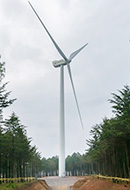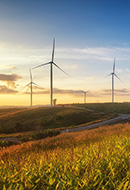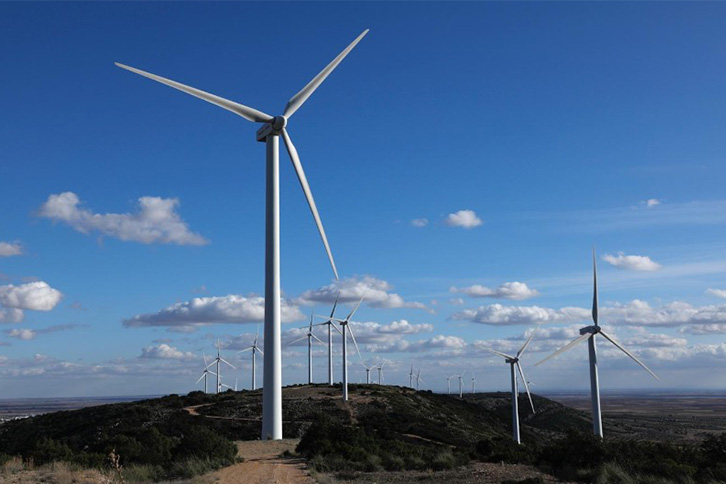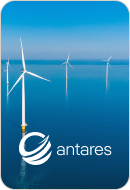10 relevant terms onshore wind energy
Top 10 most relevant terms in onshore wind energy onshore wind energy
Engenharia Energy efficiency Onshore wind
Onshore wind energy, a clean and inexhaustible source that has been used for centuries, represents one of our main sustainable bets for the future, but there is still a lot of ignorance about how it works. For this reason, we propose 10 relevant terms to understand how it works and to know in detail each of its parts.
The use of wind power dates back to ancient Egypt with the first sailing ships, which harnessed this inexhaustible natural resource to move along the Nile River. Thousands of years have passed until the present day, but wind is still an important source of energy generation: today onshore wind represents one of the main sustainable bets for the future. And to make the most of the potential of these air currents, wind farms are springing up with dozens of wind turbines that are capable of supplying thousands of homes with 100% clean energy.
In order to better understand how this energy source, which is so important for the energy transition, works, it is necessary to have a thorough understanding of each of its parts. Below, we are going to analyse the 10 most relevant terms in onshore wind energy to find out, for example, what a nacelle is or what the function of a gearbox is.
Top 10 most relevant terms in onshore wind energy
-
Wind turbine
This is perhaps the main word in the list of the 10 most relevant terms in onshore wind energy. A wind turbine is a device capable of converting the kinetic energy of the wind into electrical energy. They are the giants of onshore renewable energy that can reach a total height of more than 250 metres up to the tip of the blade at their highest point, and when installed together they make up what are known as wind farms. -
Tower
As its name suggests, the tower is the vertical structure, usually of truncated cone shape, on which the rotor and nacelle are fixed. This component of the wind turbine can reach a height of up to 170 metres, and is designed to withstand the full force of the wind and to support, in the latest models, a weight of up to 260 tonnes, equivalent to 46 adult elephants. The choice of the material from which the tower is made is fundamental to its proper functioning, with steel structures being the most common, although hybrid (a mix of steel and concrete) or concrete towers are becoming increasingly common.
In addition, it can be equipped with a lighting system and have appropriate colours in order to be more visible to air traffic. -
Hub
The hub is the element that connects the three rotating blades and the main shaft. Once the blades are moved by the force of the wind, this element is responsible for transmitting the mechanical energy to the inside of the nacelle, specifically to the gearbox. -
Blades
United to the turbine through the hub, the blades play a fundamental role in generating clean energy and can be up to 85 m long. They bear the full force of the wind, which makes them rotate at wind speeds ranging from around 3 m/s to approximately 25 m/s. This is made possible by their aerodynamic design that maximises their ability to absorb wind energy. Most blades are made of polyester resin or glass fibre reinforced epoxy, although they can also contain carbon fibre or aramid (Kevlar).
In addition, it may be fitted with a lighting and colouring system to make it visible to air traffic. -
Rotor
The rotor is known as the rotating part of the turbine. It contains the three blades of a wind turbine and the hub, which is the central structure that connects each of the blades. Its function is to capture the kinetic energy of the wind and transform it into the mechanical rotational energy of the shaft, which is then connected to the gearbox. This transformation capacity is limited to 59% (Betz limit). The maximum power that a wind turbine can produce depends on its size.

shaft


cable




generator

control
shaft


anemometer


unit













diameter
A wind turbine is a sophisticated piece of engineering. Its size means that it is built in parts and assembled on arrival at the wind farm. We will analyse the characteristics of each of its parts.
Wind power installations around the world

651 GW
installed wind power
capacity in the world

capacity in Europe

shaft





generator

control

shaft


unit

anemometer














diameter
A wind turbine is a sophisticated piece of engineering. Its size means that it is built in parts and assembled on arrival at the wind farm. We will analyse the characteristics of each of its parts.

installed wind power
capacity in the world

capacity in Europe
A wind turbine is a sophisticated piece of engineering. Its size means that it is built in parts and assembled on arrival at the wind farm. We will analyse the characteristics of each of its parts.


diameter

SEE INFOGRAPHIC: Wind energy: clean, efficient and safe [PDF] External link, opens in new window.
-
Nacelle
Also known as a nacelle, it refers to the structure at the top of the tower that houses all the internal components, such as the transmission system and the electricity generator. They exist primarily to protect these elements from external weather conditions.
In addition, it may be fitted with a lighting and colouring system to make it visible to air traffic. -
Multiplier
This element, which is located inside the nacelle, is connected to the rotor by means of a shaft (main shaft). Its function is to raise the rotational speed of this shaft from 10-40 revolutions per minute (rpm) to approximately 1,500/1,800 rpm (depending on the number of pole pairs of the generator and the frequency), adjusting this speed to that of the generator so that the electric generator is subsequently able to convert mechanical energy into electrical energy. It is an element that, in some cases and depending on the manufacturer's technology, may not be necessary. -
Generator
It consists of magnets (permanent or temporary), capable of inducing an electric current on a conductive element. It is therefore responsible for transforming the mechanical energy of shaft rotation into electricity. Most of the generators used in turbines are asynchronous, but there are also some models with synchronous generators. -
Converter
The electrical energy produced in the generator needs to be adapted to the conditions of the electrical grid to which the wind turbine is connected by means of a converter. This is one of the processes prior to transporting the electricity generated by the wind to a substation, and from there to places of consumption, such as homes. -
Foundations
Every wind turbine in an onshore wind farm needs to transmit the loads to the ground/earth. The element that ensures this function is the foundation. Made of reinforced concrete, the foundation additionally provides a high stabilising capacity for the wind turbine as a whole thanks to its own weight. At present, its ground plan dimensions are around 20-25 metres. The tower is anchored to the foundation by means of steel connectors (bolts).

What is onshore wind energy
Find out how onshore wind farms work.

Installation of wind turbines
What is the most efficient place to install a wind turbine?

Wind measurement
We tell you how it is done, why it is so important and the latest news.






